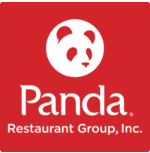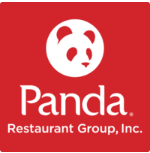Introduction
-
Site conducted
-
Conducted on
-
Prepared by
-
Location
-
Document No.
Construction and Approval
-
Has a floor plan of the food premises previously been submitted to Baladyiah of Riyadh?
-
Has the layout or equipment of the food premises been changed since the last health inspection was conducted?
-
Does the food premises have the key utilities (e.g. water, onsite sewerage, power) required to operate safely?
-
Are all hand washing sinks supplied with warm running water, liquid hand soap and paper towels?
-
Are all food contact surfaces smooth, non-porous, and easy to clean and sanitize?
Control of Food Hazards: Temperatures
-
Are accurate thermometers available onsite for monitoring food and refrigeration unit temperatures?
-
Are cold potentially hazardous foods being stored in refrigerators or freezers?
-
Are all refrigerator temperatures at 4°C/40°F or colder?
-
Are all freezer temperatures at -18°C/0°F or colder?
-
Are all hol-holding unit temperatures at 60°C/140°F or above?
-
Are temperature logs being kept for refrigerators, freezers, and hol-holding units?
-
Are cooked foods being heated to an internal temperature of 74°C/165°F?
-
Are cooked foods being cooled from 60°C/140°F to 20°C/68°F in 2 hours and from 20°C/68°F to 4°C/40°F in 4 hours?
-
Are frozen potentially hazardous foods being thawed in either refrigerators, microwaves, or in cold running water? Describe method.
-
Are re-heated foods being heated to an internal temperature of 74°C/165°F?
Control of Food Hazards: Cross-contamination
-
Are food handlers washing their hands before commencing work, and after any activity where hands may become contaminated?
-
Are all foods on the premises obtained from approved sources (i.e. an approved food premises or a licenced slaughter facility)?
-
Are foods labelled and stored in food-grade packaging or containers and in a manner that protects them from contamination?
-
Are foods at least stored 15 cm/ 6 inches off the floor?
-
Are ready-to-eat foods stored above, or in a separate area from raw meat, poultry or fish?
-
Is there a policy restricting staff ill staff from food preparation and handling?
-
Do members of staff have clean work clothes and exhibit satisfactory personal hygiene?
Cleaning and Sanitation
-
Are food contact surfaces, utensils, and equipment being cleaned and sanitized after each use?
-
Is a 3-compartment sink used as the method for cleaning and sanitizing utensils?
-
Is the dishwasher sanitizing solution concentration adequate?
-
For manual dishwashing: 100 parts per million of chlorine or 200 parts per million of Quats. For a commercial dishwasher: 50 parts per million of chlorine.
-
Is the dishwasher sanitizing temperature adequate (i.e. 71°C/160°F at the plate's surface or 82°C/180°F at the temperature gauge)?
-
Are the concentrations of surface sanitizing solutions (spray bottles or buckets) sufficient (i.e. 200 parts per million of chlorine or Quats)?
-
Are wiping cloths stored in a sanitizing solution between uses?
-
Is there evidence, or concerns, of pest activity within the premises?
-
Is the premises clean, sanitary, and in good repair?
-
Is the premises being monitored for signs of pest activity?
Operation and Administration
-
Is there at least one staff member on present at all times with a FOODSAFE Level 1 certificate or equivalent?
-
Does the operator hold a FOODSAFE Level 1 certificate or equivalent?
-
Is an up-to-date Food Safety Plan available onsite? Indicate date of last review.
-
What is your rating for this evaluation (1 is poor 5 is Outstanding)
-
Is an up-to-date Sanitation Plan available onsite? Indicate date of last review.
-
By signing below, I confirm that the information given in this self-inspection checklist is truthful and accurate:









